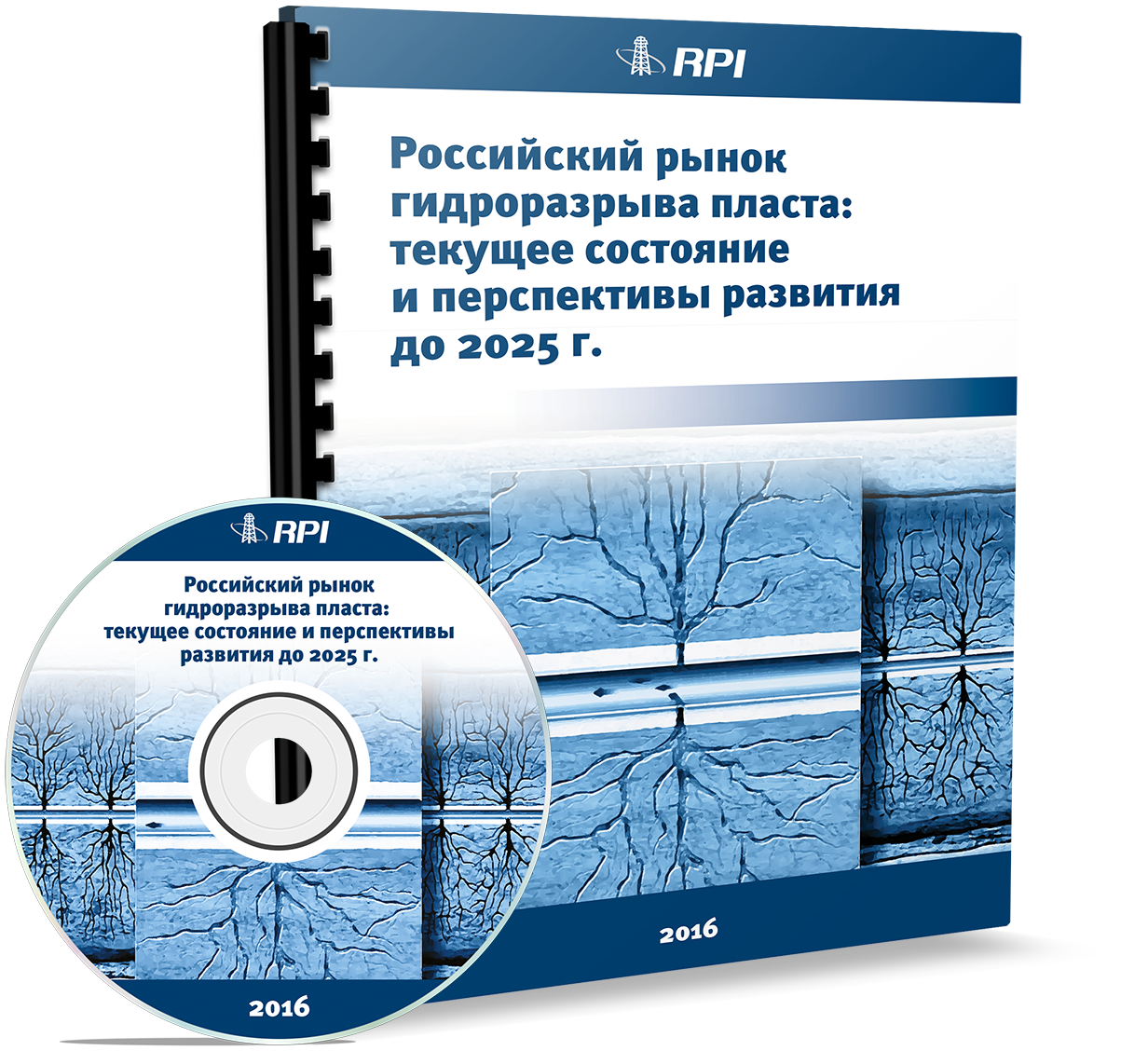Over the past 20 years, RPI has carried out hundreds of studies on all major segments of the oil and gas industry of Russia, CIS and Eastern Europe.
RPI specialists are permanently in close connect with the industry and monitor its developments closely to provide best-in-class analytics and information support for industry players.
RPI specialists are permanently in close connect with the industry and monitor its developments closely to provide best-in-class analytics and information support for industry players.

The English version of the report is available in 2-3 weeks after ordering
• In 2015, the hydraulic fracturing market witnessed significant changes that shaped or enhanced the key trends in mid-term. Conventional fracking operations continue to lose momentum as a well stimulation factor at most oilfields. At a time when the efficiency of frac jobs is falling, oil and gas companies are reducing their operating costs in order to prevent substantial drilling budget cuts. Multistage fracking has further established itself as an enhanced oil recovery technique, following the trend of growing importance of horizontal drilling. In some oil and gas companies the contribution of multistage fracking (as part of horizontal well construction) to production growth over the last few years has nearly matched that of massive fracking, currently lagging behind only by a fraction of a percent instead of multiple times as had been the case earlier.
• Jobs on the operating well stock (excluding recently drilled wells), which is the largest segment of the fracking market, has seen its dynamics shift. During the 2010-2014 span, the overall number of frac jobs significantly increased, yet this was accompanied by steadily declining rates of incremental production resulting from these jobs. In 2015, oil and gas companies invested mostly in production drilling, which resulted in a 10% growth by the end of the year. By contrast, the number of fracking operations in 2015 dropped by 5% year-on-year, marking the first decrease since 2011.
• The number of operations on new wells (both at old and new fields) reflected the growth in the drilling of new wells, yet grew at an even quicker rate due to an increasing share of new wells being fracked. Consequently, the growth at the new stock made up for the shrinking demand at older wells.
• In the medium term (2016-2020) demand in the conventional fracking segment is expected to stagnate: provided there is no major technological breakthrough, a moderate rise at the new well stock will only make up for a negative trend at the operating well stock. The multistage fracking market will continue to grow alongside the expanding horizontal drilling market, a growing share of unconventional reserves, and more complex engineering and technological solutions. By 2020, the multistage fracking market can reach 40-45% of the conventional fracking market in monetary terms. Following the trend observed in the multistage fracking market, a significant rise is expected in the market of hi-tech equipment and services for horizontal well completion.
The Russian Hydraulic Fracturing Market report aims to provide a wide range of market players with analytical support required to make timely strategic and operational decisions. For this purpose, we have focused on the following key elements:
- Key growth factors and development trends, both pertaining to Russia's oil and gas industry as a whole, as well as those specific to the hydraulic fracturing market and its main segments.
- Market size estimates for hydraulic fracturing by 2025. This outlook is broken down by every major oil- and gas-producing region, and factors in particular traits of the drilling market in each region.
- Analysis of key customers and contractors, including an assessment of hydraulic fracturing capacity (frac fleets) and work volumes.
The report provides a basis for building estimates for a whole range of oilfield services and equipment segments that relate to hydraulic fracturing, including well completions, reservoir well modeling and monitoring, diffferent types of downhole treatment operations, and other work.
The Russian Hydraulic Fracturing Market report is the first in a series of reports on the main segments of the country’s oilfield services market. These reports provide an analysis of the current state of the market and an outlook to 2025 for the following segments:
1. Drilling Market (930 Euro)
2. Hydraulic fracturing (930 Euro)
3. Sidetracking (930 Euro)
4. Coiled Tubing (770 Euro)
5. Workover and well servicing (930 Euro)
6. Seismic survey (930 Euro)
7. Pump Services (770 Euro)
8. Well logging (770 Euro)
9. Directional drilling services (770 Euro)
10. Well perforation (710 Euro)
1. KEY FINDINGS
2. OIL AND GAS CONDENSATE PRODUCTION IN RUSSIA. DOMESTIC OILFIELD SERVICES MARKET
2.1 Oil and gas condensate production by company and producing region, 2005-2015
2.2 Outlook for oil and gas condensate production in Russia to 2025
2.3 Oilfield services market development prospects to 2025
3. KEY TRAITS OF RUSSIA’S HYDRAULIC FRACTURING MARKET TODAY
3.1 Fracking operations dynamics in 2005-2015, in terms of size and costs
3.2 Main trends and growth drivers in the hydraulic fracturing market
3.3 Contracting practices in Russia’s hydraulic fracturing market
4. HYDRAULIC FRACTURING MARKET FORECAST TO 2025
4.1 Methodology used for developing forecast
4.2 Hydraulic fracturing market forecast to 2025 from standpoint of key segments and main producing regions
5. KEY CUSTOMERS IN HYDRAULIC FRACTURING MARKET
5.1. Hydraulic fracturing market breakdown by customer, in terms of size and costs
5.2. Customers’ market shares in massive and multistage fracking operations
5.3. Horizontal drilling, 2016-2020
5.4. Exploration drilling, 2016-2020
6. ANALYSIS OF MARKET COMPETITORS
6.1. Contractors’ market shares; efficiency of fracking fleets
6.2. Key contractors’ profiles
7. SHORT- AND MID-TERM OPPORTUNITIES (KEY DIRECTIONS) FOR SUPPLIER COMPANIES IN THE HYDRAULIC FRACTURING MARKET
Feedback
You can ask your question about report or leave your comment in a form below.
* By sending this form you agree with the Privacy policy and Processing of your personal data.


















